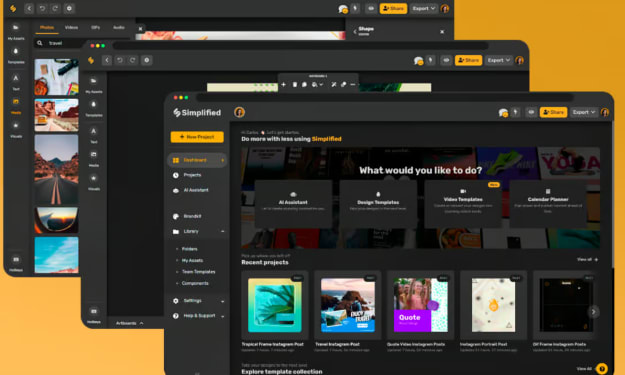Modern Construction Techniques in 2022
Like no other technology, 3D printing reduces the density of workers on job sites (for good or bad).

Like no other technology, 3D printing reduces the density of workers on job sites (for good or bad). Concrete is essentially poured in vertical piles by nozzles which follow a preprogrammed design. Commercial use of the method has already been reported around the world, and growth in its use is anticipated rapidly. The company that printed an entire neighbourhood in Mexico recently raised $35 million. For any Cremorne construction company on a smaller scale, it's the same process in the factory. In most cases, the process is used to manufacture small parts of larger assemblies, typically from plastic. While 3D printing will probably never replace injection moulding for mass production, it makes the manufacture of custom items more affordable. This is a huge opportunity for designers.
Modular Construction
Prefabrication and modular construction, which had already been steadily on the rise, should see a big boost in interest following the pandemic. In both processes and results, they are perfect for any Cremorne construction company. It is already built in manufactured buildings to promote low worker densities. In these buildings, distancing is possible thanks to the enormous size and airiness. Additionally, the equipment used - ceiling cranes, conveyors, and lifts - is designed to reduce worker proximity and labour costs by allowing fewer people to move larger components. The buildings are typically small, so they can only be transported by trucks once they are manufactured. Therefore, they are ideal for a world where separation is necessary.
Business owners need individual offices with independent systems, remote workers need an office at home, or hospitals need to add a few more rooms. The benefit of prefabricated buildings is the fact that they are affordable and that they can be temporary. Temporary solutions can be the best way to handle uncertainty, especially for a Cremorne construction company. It's obvious that construction will continue.
Design Technology: BIM & VDC
Even before the pandemic, design technology was already a popular trend in construction, and there is no stopping it. The benefits of building a building in virtual space before building it in real life are too great for designers or contractors to ignore. As quickly as CAD replaced pencils, Building Information Modelling (BIM) has swept across the industry. Industry leader REVIT is more than just a drafting program. It is a re-thinking of the design and production processes.
Drawings are not necessary in BIM; there is only a model of the building in virtual space that you take images of to make the drawings. As a practice run for building it in the real world, it allows the designer to actually construct the building in the virtual world. Building in the virtual world is even more valuable for builders. Construction contractors often refer to it as VDC (Virtual Design and Construction), but the idea is the same. Imagine discovering all the project's pitfalls before a shovel of dirt is turned over - the tricky connections, the coordination challenges, the missing but necessary components. In the field as well as in the office, the savings can be phenomenal.
Disruptions at Work
Capital is the key to construction work. Uncertainty is unattractive to capital. Finance is hard to come by for projects, especially large ones. The AIA anticipates a dramatic decline in nonresidential building spending in 2021. Almost certainly, spending on infrastructure projects will be delayed as government debt rises at every level. Slowdowns are already occurring in the private sector as well.
Disputes over payments
In times of tight money and confusing conditions, it is inevitable that the flow of funds will become a problem. Construction companies and building owners are both experiencing bankruptcy on a growing scale, and we can expect the trend to continue. It is certain that there will be an increase in lawsuits, however there will also be a rise in mechanic's liens, an instrument that contractors and subcontractors use to collect payment due. Most often, even the Notice of Intent to File a Lien resolves a pay dispute, and if one is eventually filed, it seldom leads to foreclosure since there are many options for resolution along the way. We should expect some interesting manoeuvrings by contractors and owners on the lien front due to disruptions in payment, including selling claims. Even Levelset pays contractors who have protected their payment rights with cash up front for lien and bond claims.
Diversification of the supply chain
Contractors have been forced to scramble to find alternative suppliers or pay higher prices for materials due to disruptions to supply chains. There are no signs that things are going to change in the near future. Taking risks on new alliances will be part of this construction trend. This will require reevaluating long-term business relationships and brand loyalty. Suppliers, subs, generals, and owners will have to coordinate strongly in order to make timely, informed decisions about alternatives. Contracts will likely include escalation clauses to cover unforeseen costs, and current contracts may also need revisions. Additionally, it can give nimble suppliers and contractors the opportunity to reach areas and clients that may have been difficult to access in the past.
Reduced number of non-residential starts
Building starts for non-residential buildings have decreased in 2020. By a lot. Dodge Data and Analytics reports that single-family starts were down 31% just from June to July, while multi-family starts increased 22.6%. House construction is largely attributed to low interest rates, but it seems that the pandemic is also driving people to look for apartments and to move away from crowded urban areas, reversing decades-long trends. The economy is experiencing a downturn due to uncertainty in non-housing sectors. In the midst of uncertainty about the future of the industries they house, it is difficult to invest in large and expensive buildings such as office buildings, towers, and hotels that form a huge part of the commercial building market. Nevertheless, it is not all doom and gloom. In the hospitality sector, for instance, architects report that projects seem to be on hold rather than cancelled. Several hotels are planning to carry out renovations that would otherwise have been disruptive to guests because of their low occupancy rates.
The Construction Sector in 2022: Takeaways
Despite the fact that we can't really predict the future, we can make educated guesses based on history. Families forced to cancel vacations and spend more time outdoors are building swimming pools in unexpectedly high numbers.





Comments (1)
I thought I was about to be stuck with thousands of pounds worth of BTC on my laptop because I forgot my password after I wasted 2 BTC in a scam investment site but [email protected] was able to unlock it for me in under 12 hours. He also went ahead to recover the 2 BTC with accumulated ROI from the scammer’s wallet. It could not have been a better service. Huge relief is an understatement! I would recommend him to all my friends or whoever is in a similar situation. 5+ Stars from me.